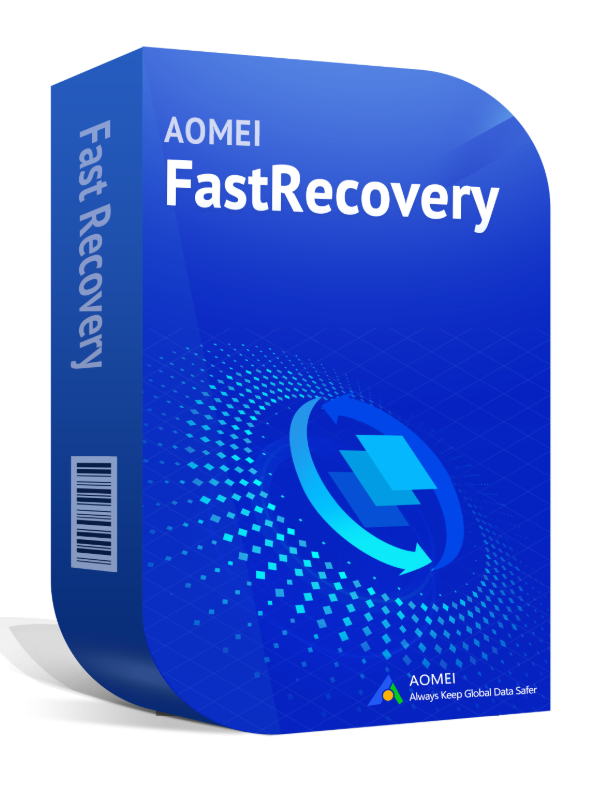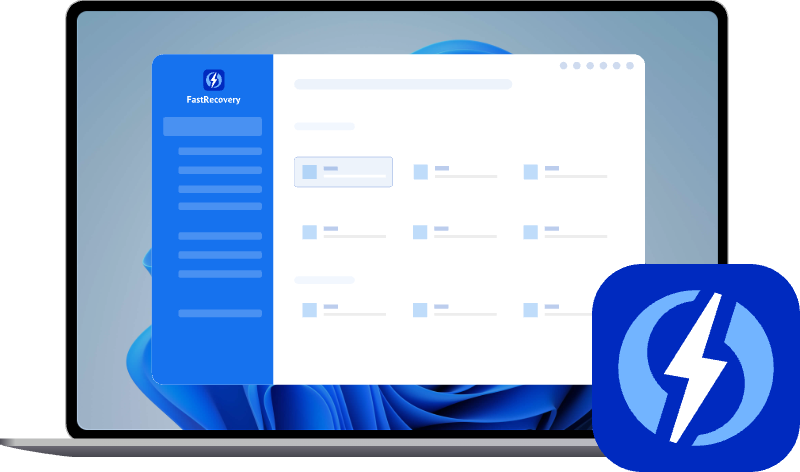How to Recover Data from eSATA External Hard Drive
Fear not, this article will introduce you to the best practice to recover data from eSATA external hard drive recovery step by step, with a high success rate. Scroll down 👇 to explore more.
Although eSATA hard drives are not yet mainstream drives, many businesses and individuals still use it to store their important data due to its faster transfer speed and robust technology. But frustratingly, they are prone to data loss.
In this article, we'll go straight into how to recover data from an eSATA external hard drive. You are in the right place if you have trouble handling this task.
| 🥇The Best Practice - using AOMEI FastRecovery |
|
| 👉How-to Guide: | You need to download and install AOMEI FastRecovery on a working Windows PC. Then, open it. Hover over the mouse ... Full Guide |
What Is eSATA?
eSATA, short for External Serial Advanced Technology Attachment, serves as an external expansion specification for the SATA interface and allows you to connect the SATA drive externally.
- One of its biggest advantages is to hold and transfer large amounts of data. The transfer speed is up to 600MB/s (6GBps).
- In addition, this device usually comes with a USB interface. So you can enjoy both high-speed eSATA and USB ports.
It’s not a required function but added to both controller and devices, requiring the support for the necessary SATA feature. The Hot Plug capacity is important for the eSATA drive to work properly. In addition, it uses a very different physical connector to better shield against electromagnetic interference.
Can You Recover Data from eSATA External Hard Drive?
Certainly! Retrieving files from eSATA external hard drive is feasible, and here are some certain critical factors for data recovery:
- The devices must support the appropriate eSATA or USB interface to connect host adapters and mass storage devices.
- Your data is not overwritten. When you delete files or format a disk with the quick format method, only references are deleted, not real data. It’s still on your external disk.
- Smaller files are easier to recover than larger ones.
- Single eSATA external hard drive recovery is much easier than devices usingRAID (redundant array of independent disks) technology. It consists of multiple disks in which the same data is stored to keep copies of your files.
- Data recovery also relies on a powerful data recovery software. It will scan your external disk thoroughly and search for all the deleted or lost data on it.
Best Practice for eSATA External Hard Drive Recovery
AOMEI FastRecovery is one of the best eSATA external hard drive data recovery software. With its advanced scanning methods, you can find as many files as possible and recover them quickly and completely, regardless of the data loss scenarios.

- Apply to: recover deleted X3F/HEIF/JPG images, AVI/MP4/MPG videos, DOC/DOCX/TXT/XLS documents, etc over 1000 file formats.
- It has a free edition that recovers data up to 500MB.
- Recover specific files or folders instead of all.
- Recover files while scanning.
- Search or filter files quickly through types, file names, extensions, etc.
- Compatible with all brands of eSATA external hard drives, such as Seagate, Western Digital, LaCie, WD_BLACK, Toshiba, Oyen Digital, etc.
- Support NTFS, FAT32, exFAT, and ReFS file systems.
- Retrieve files lost in any scenario, such as accidental deletion, formatting, virus infection, corrupted disk, etc.
- .....
In addition, the software does not require technical expertise and is friendly to novices, making the recovery process seamless.
Please download it to have a try!
Step 1. Connect your eSATA external disk to a Windows PC. Launch this reliable data recovery software - AOMEI FastRecovery. Hover the mouse over the drive saved deleted files before, and click Scan.
Step 2. It will run Quick Scan and Deep Scan automatically to find out all the deleted or lost files. It can be images, videos, documents, audios, etc. To locate them quickly, use the Filter feature or go to the original location in the left panel.
- Type: It will contain all the file types in the local drive, such as, images, videos, documents, mails, web pages, compressed files, etc.
- Data Modified: It supports today, yesterday, last 7 days, last 30 days, and custom.
- Size: It allows you to filter file size from less than 128KB to 128KB ~1MB to 1MB ~ 512MB and above, or custom.
Step 3. Once found, select the desired files and click Recover x files to recover data from eSATA external hard drive. You will then be asked to select a location. Please select a new location instead of the original location to prevent potential data overwriting.
-
The restore button will display the number of selected files and their full size.
-
You can recover data from eSATA hard drive for free, up to 500MB. Once exceeded, please upgrade to the advanced editions.
In addition, you still can use this software to recover data from SATA drive, SCSI drive, PCIe drive, etc.
Conclusion
eSATA external hard drive recovery is necessary for users who are experiencing data loss. It can be a distressing experience but fear not, the best Windows data recovery software - AOMEI FastRecovery can help you recover data from eSATA external hard drive effortlessly. Why not give it a try?
Please act promptly to increase of success rate of data recovery. At the same time, please stop using this eSATA external hard drive immediately to prevent data overwritten. It’s also suggested to create a copy of your files to protect them safely. Try Windows backup software- AOMEI Backupper Standard!
FAQs
1. What is the purpose of eSATA?
2. Is USB 3.0 or eSATA faster?
3. How do I recover files from an external hard drive that won't read?
- If it is not showing up in File Explorer, check your connection cable or use it on a different machine.
- Or go to Disk Management and check if it has a drive letter. If not, assign a new drive letter for it.
- In addition, you can also update the disk driver, run the chkdsk command, use reliable data recovery software to scan your external disk, etc.

